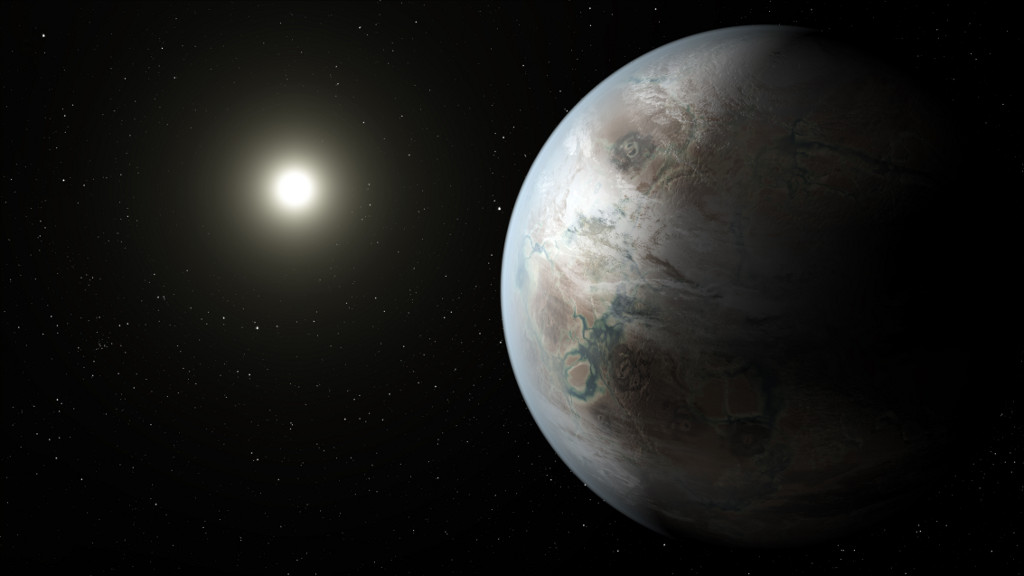Astronomers with the University of Texas at Austin have just discovered the most Earth-like planet yet, now known as Kepler-452b, the McDonald Observatory announced Thursday.
Kepler-452b is the closest thing we’ve found to a planet that may support human life, according to McDonald Observatory astronomer Michael Endl. “This planet is probably the most similar to Earth yet found,” he said in an advisory.
UT Austin astronomers discovered the planet, which resides some 1,400 light years away, working with NASA on the Kepler mission — a galactic survey of sorts meant to ferret out potentially habitable planets.

An artist’s rendition of what Kepler-452b’s surface might look like.
NASA’s space-based Kepler telescope first spotted the planet, but the McDonald Observatory was required to confirm key features. By studying the system’s star, they were able to determine that Kepler-452b is about 1.4-1.6 times the size of Earth and orbits its star once every 385 days.
Sounds great, right? Of course, there’s a catch. “At around 1.5 times the Earth’s radius there seems to be a transition going on from predominantly rocky planets to planets that contain more volatiles — ices, which would make it a mini-ice giant,” Endl said.
In other words: “We don’t know if it’s a big rocky planet or if it’s a mini-Neptune,” Endl added. So take those awesome-looking artist renditions with a grain of salt. Still, it’s an exciting and hopeful discovery. Astronomers believe there could be billions of planets in the “habitable zone” of their systems, like Kepler-452. So far, only a small number have been found.
“We can think of Kepler-452b as an older, bigger cousin to Earth, providing an opportunity to understand and reflect upon Earth’s evolving environment,” explained Kepler researcher Jon Jenkins. “It is awe inspiring to consider that this planet has spent 6 billion years in the habitable zone of its star, longer than Earth. That’s substantial opportunity for life to arise, should all the necessary ingredients and conditions for life exist on this planet.”
We’ve known for a while that UT Austin is a scientific powerhouse — as studies have shown — but this is just off-the-charts cool. Way to go!








